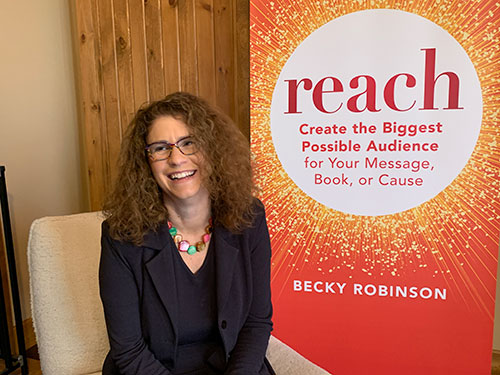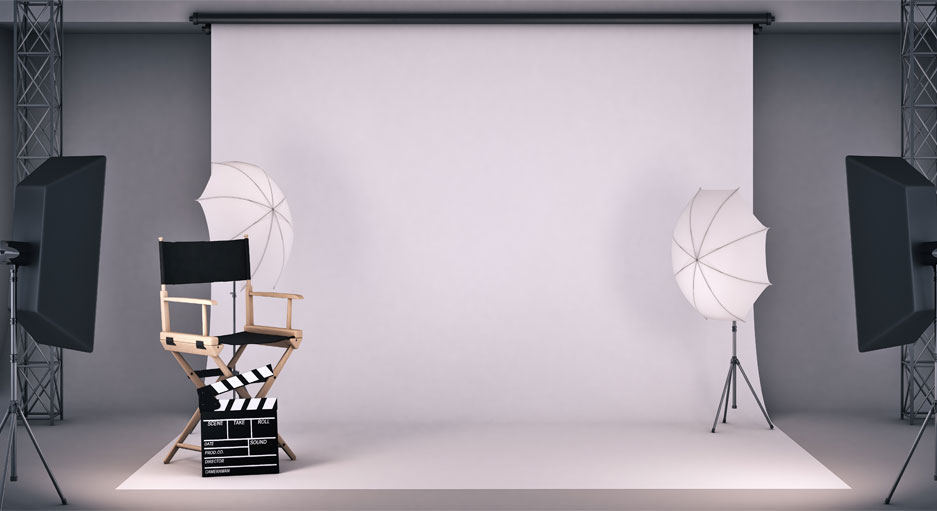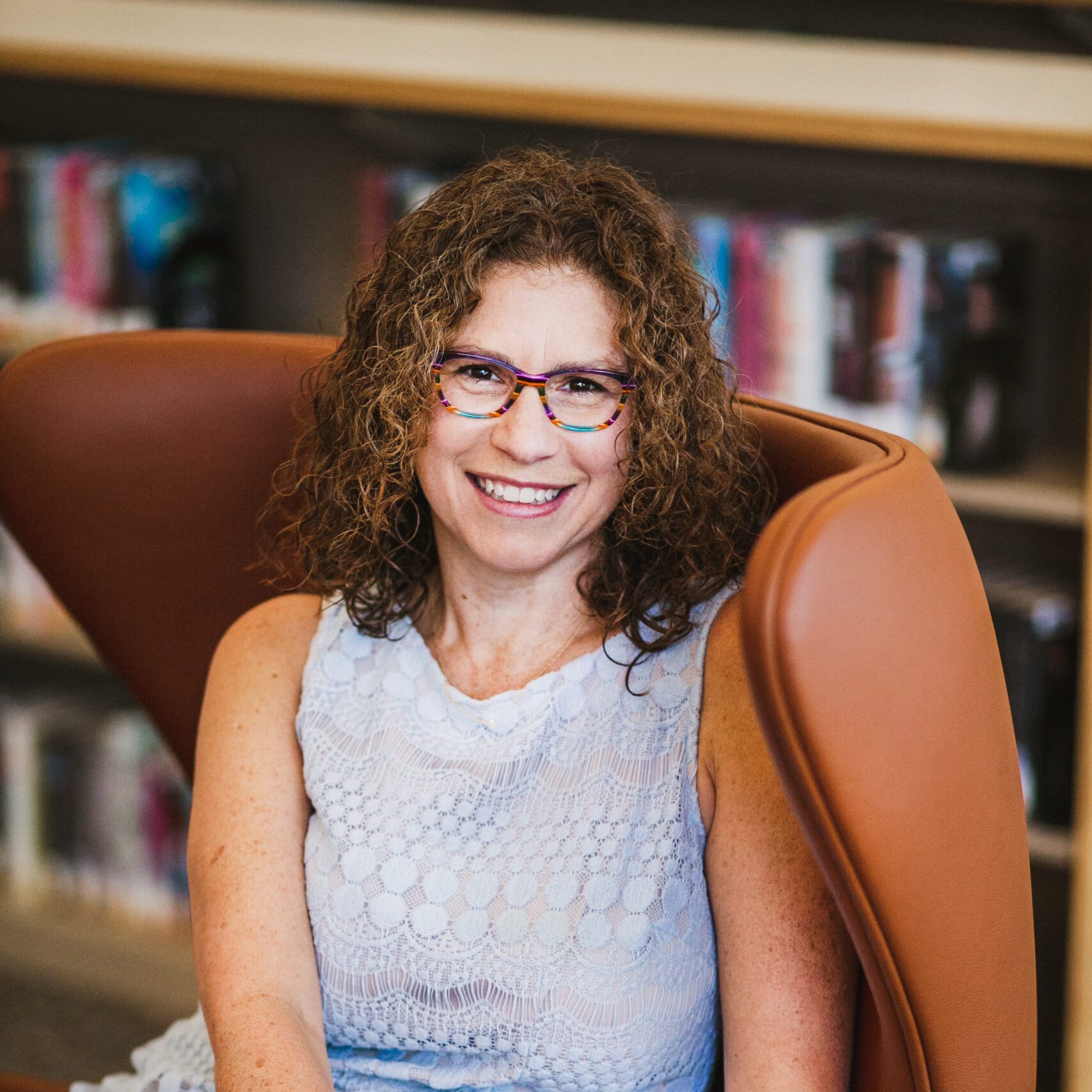It’s been years since I sat in a darkened movie theater, waiting for the start of the show. I usually enjoyed the trailers, those exciting previews of upcoming new releases. I’ve been less enthusiastic about book trailers in my years of working with authors. I wasn’t sure the time and expense resulted in any significant value for the authors investing in them.
When I started to plan my own book marketing efforts, creating a trailer didn’t make my list of things to do until Kristen Frantz, VP of Sales and Marketing at Berrett-Koehler Publishers, encouraged me to create one.
Because I want to use my own author journey to educate and inspire other authors, I decided to use my own experience to explore and outline what’s possible for us.
What I Discovered
The possibilities for creating a book trailer are vast, depending on your desired investment of time, energy, and money. Consider this creative Tik Tok style video from author Nikki Soulsby. Nikki told me it took her about 20 minutes to create. It’s fun and shows her personality, while sharing a glimpse of the content of her book. On the higher end of what’s possible, Colin Hunter hired a professional cinematographer to film his trailer on location in his home country of England. He called the process “quite time consuming”—a full day of filming.
A trailer is a vehicle for giving people an idea of the value of your book, while creating an emotional connection. The outcome any author wants is that someone will watch their trailer and then take action. The action we most want is for people to buy our book. So a trailer does its job when it helps someone to remember your work or drives them to learn more, buy the book, and/or share your book (or book trailer) with others.
To explore the process, my team and I decided to film two different types of trailers, one lower budget (on purpose!) and one more professionally produced. This post includes some insights and lessons learned from each approach.
The DIY Video
I filmed one video at home, with some support from my friend Kelly. She has done a lot of video work and certainly has the skills to do more, but we purposefully tried to replicate what someone could do at home, with a limited budget of time and money.

Watch how we made the video here. Watch the finished DIY video here.
Supplies:
- My iPhone XR
- An adjustable tripod
- A borrowed, clip-on type lavalier microphone
- My book banner
- My laptop and a free teleprompter
- Book graphics
When Kelly arrived at my house, I only had only a couple of hours available. We started to look for a place to set up in my home office and tried a couple of options before finding a good shot. I had previously written a short script, aiming for a video of one minute or less. Kelly set up an extra iPhone camera to catch the “making of” footage and an additional angle. Once we were ready, we did a dozen or so takes. Total time for set up and filming was about two hours. Kelly did some post-production work, including replacing the audio from my iPhone with the audio from the microphone and adding some graphic elements. She estimated that her total time in post-production was about four hours. My financial investment on the DIY version totaled $200.
The Professionally Produced Video
We partnered with Carolyn Byard of Sparkified to create a professional trailer. We ended up with four versions, two short and two long, one set of each with captions and the other without.
Watch the professional trailer here.
Supplies:
- A professional videography team and studio
- A professional producer and editor
- An external hard drive
- Coffee
Carolyn and I have been collaborating for years and I knew she had a gift for telling powerful stories through video, so I reached out to see what was possible. She was gracious enough to help me stay budget conscious through the process and we started by looking for a videographer. Weeks before Christmas, I had a quick phone call with Deke Ludwig, her recommended choice. Deke lives in my area and works for an agency and does some freelance video recording. He made a mind-blowingly generous offer to do the video shoot for free if I could come to his location and meet Carolyn’s time constraints. We secured an evening time slot so that we could use his agency’s high-end equipment and office space for the recording.
When I arrived at the office for the shoot, I brought Starbucks for everyone; a 7 p.m. call required some extra caffeine for me! Deke and his assistant (both volunteers) had already been setting up cameras and lighting for about 90 minutes. Caroyln had sent over a list of questions for the shoot, which I reviewed. I didn’t write or prepare answers because I wanted to spontaneously respond to her questions. We started shooting about 7:30 p.m., with Carolyn behind the camera as an interviewer. In addition to getting footage for the finished trailer, we also filmed some other video to use for my book’s online resources. We shot video for about an hour and 45 minutes; then I headed home while Deke and his team did the tear down. In all, Deke donated nearly a day’s work to my trailer. (His price for this work would have been $4,000.)
From there, Carolyn completed the professional post-production work, which she estimated to be 20-plus hours. At her friend’s and family rate, my investment totaled about $2,000.
My Takeaways from This Experience
While I still need to see results to evaluate the value of the videos I’ve created for this campaign, I learned a few things about myself and the process.
For me, unscripted is better than scripted. While it’s possible that part of my awkwardness in filming the DIY video is the hyper-awareness of and discomfort in front of my own camera, I think more passion comes through when my comments were unscripted. These might come through in the DIY filming, had I given myself more time for the shoot and ditched the teleprompter.
It’s possible to create a decent video on a shoestring budget. Given more time or a bit more post-production work, budget-conscious authors can create great video, even without high-end equipment. My take is that the difference in the quality of our two approaches is more related to my confidence behind the camera than it is about the camera itself, and the decision we made to keep the first shoot as simple as possible in terms of the time and money investment.
Video can be an important strategic investment. Given the financial resources to do so, I’d welcome the opportunity to create more content in the controlled environment of a studio. Creating professional-quality video can enhance your brand’s credibility and allow you to connect with audiences in powerful ways.
I’d love to hear your feedback about the videos we created. I hope this post adds value to your journey.


0 Comments